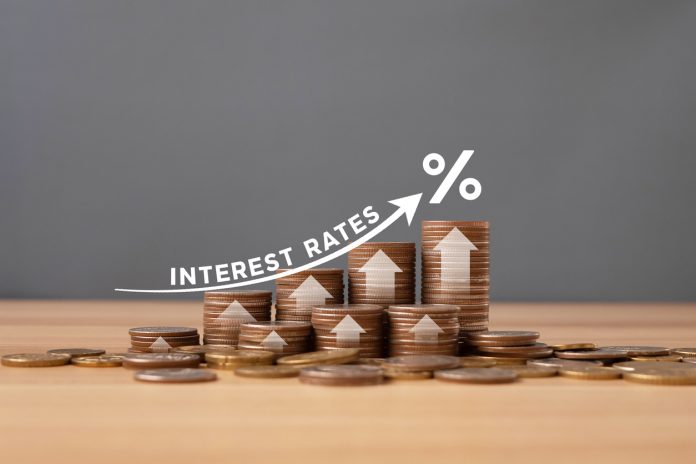What is a forecast of interest rates?
A forecast of future interest rates in an economy or on a particular financial market is referred to as an interest rate forecast. It entails forecasting probable interest rate changes over a predetermined time frame, which is typically short-term (a few months, for example) or long-term (a few years). The projection normally takes into account inflation expectations, monetary policies, economic indicators, and other pertinent variables that can affect interest rate forecast changes.
Influencing Factors on Interest Rate Forecasts:
- Economic Indicators: Analysing economic indicators such as GDP, employment data, inflation rates, and consumer spending can provide insights into the general health of the economy and impact interest rate forecasts.
- Central Bank Policies: Monetary policy actions and announcements made by central banks, such as the Federal Reserve in the United States, can have a substantial impact on interest rate estimates, including changes in the benchmark interest rate.
- Expected changes in inflation rates can influence interest rates, as central banks frequently modify rates to manage inflation.
- Global Economic Conditions: Global economic trends and geopolitical events can have an impact on interest rates in a country, especially in a global financial market.
Short-term vs. Long-term Interest Rate projections:
Short-term projections usually concentrate on the immediate future (e.g., the following few months) and are influenced by more immediate factors including economic data releases, market sentiment, and short-term policy adjustments.
- On the other hand, longer-term projections examine larger economic patterns and policy expectations, taking into consideration elements like long-term growth prospects and inflation prognosis. They often cover a longer time period (e.g., the next several years).
The Importance and Application of Interest Rate Forecasts:
- Interest rate estimates are critical for individuals and organizations making financial decisions, such as borrowing and investing plans. They assist in determining the best moment to get loans, invest in fixed-income assets, or refinance current debts.
- Monetary Policy Analysis: Interest rate projections are used by policymakers and central banks to develop suitable monetary policies that support economic stability and growth.
- Interest Rate Forecasts’ Impact on Stock and Bond Markets: Interest rate forecasts can have a substantial impact on stock and bond prices. Investors frequently adjust their portfolios in response to anticipated changes in interest rates.
Interest rate forecasting’s restrictions and risks:
- Interest rate estimates are uncertain because they are based on predictions of future economic conditions and government policies that may or may not come to pass.
- Unexpected external events can disrupt economic conditions and have unexpected effects on interest rates, such as natural disasters or geopolitical tensions.
- Updates: Economic conditions can quickly change, necessitating the need for updates to interest rate forecasts, which makes generating long-term predictions more difficult.
Interest Rate Forecast Interpretation:
Gradual vs. Sharp Changes: Depending on the perceived economic conditions and policy stance, forecasts may imply either gradual or rapid adjustments in interest rates.
Analysts frequently highlight the potential positive and downside risks associated with their forecasts in order to acknowledge uncertainty and potential departures from their projections.
Connection to Economic Indicators and Yield Curves
Understanding the relationship between interest rate estimates and various economic variables, such as unemployment and inflation, can provide further insight into the logic behind expected rate movements.
Yield curves, which depict the relationship between bond yields and maturities, are widely tracked in order to get insight into market predictions about interest rate fluctuations.
Does the prime rate match the mortgage rate?
Your mortgage rate and the prime rate are not the same. The prime rate is the beginning point for lenders for setting interest rates for loans for homes, private credit loans, and other investments. In general, variable rate mortgages are primarily impacted by the prime rate. The interest rate you are required to pay on any borrowed money is the mortgage rate.
What is the Canadian mortgage interest rate projection for 2023?
On July 12th, the Bank of Canada announced a 25 basis point rate increase, increasing the interest rate to 5.00%. Despite the threat of a recession, Canada’s jobless rate remains low. Because strong employment is associated with inflation, this economic data is expected to cause a delay in the Bank of Canada’s anticipated interest rate decreases. Unemployment is on the rise as of June 2023, indicating that interest rate increases are having the desired effect.
Conclusion
In conclusion, anticipating future changes in interest rates based on a variety of economic and policy factors is what interest rate projections entail. Due to the unpredictability of future economic conditions and events, they have inherent limitations and dangers yet are crucial for financial decision-making, monetary policy formation, and investment strategies.
Disclaimer: This article contains sponsored marketing content. It is intended for promotional purposes and should not be considered as an endorsement or recommendation by our website. Readers are encouraged to conduct their own research and exercise their own judgment before making any decisions based on the information provided in this article.




































































